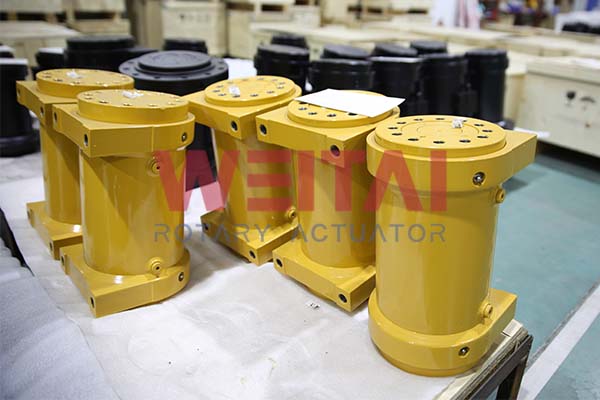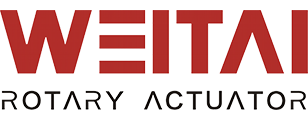helical hydraulic rotary actuators are crucial components in many industrial and automation applications, offering precise control and reliability. However, like any mechanical device, they require regular maintenance to ensure optimal performance and longevity. Here are some essential maintenance tips to keep your helical hydraulic rotary actuators running smoothly.

1. Regular Inspection
Conduct routine inspections to identify any signs of wear, damage, or misalignment. Look for:
- Physical Damage: Check for cracks, dents, or signs of excessive wear on the actuator housing and components. Small issues can escalate quickly, so timely detection is crucial.
- Alignment: Ensure the actuator is properly aligned with its load to prevent undue stress. Misalignment can lead to uneven wear and operational inefficiencies.
2. Lubrication
Proper lubrication is key to maintaining smooth operation. Follow these guidelines:
- Use Appropriate Lubricants: Refer to the manufacturer’s specifications to choose the right lubricant for the actuator type, considering factors like temperature and load conditions.
- Lubricate Moving Parts: Regularly apply lubricant to bearings, gears, and other moving components to reduce friction and prevent overheating. Establish a lubrication schedule based on usage patterns to keep components well-greased.
3. Cleanliness
Keeping the helical hydraulic rotary actuator and surrounding area clean is vital to prevent contaminants from interfering with operation:
- Remove Dust and Debris: Regularly clean the actuator to avoid build-up that can affect performance. A clean environment also reduces the risk of corrosion.
- Inspect Seals and Covers: Ensure that seals are intact to prevent dirt and moisture from entering the actuator. Damaged seals can lead to internal contamination and reduced lifespan.
4. Check Electrical Connections
For electric rotary actuators, maintaining proper electrical connections is critical:
- Inspect Wiring: Regularly check for frayed wires, loose connections, or signs of overheating. Electrical failures can lead to actuator malfunction and potential damage.
- Monitor Control Signals: Ensure that the control signals are consistent and within the specified range to avoid erratic operation. Use diagnostic tools to verify signal integrity.
5. Monitor Performance
Keep an eye on the actuator’s performance metrics to identify any potential issues early:
- Track Operational Parameters: Monitor the speed, torque, and positioning accuracy during operation. Variations from expected parameters can signal underlying problems.
- Identify Anomalies: Look for changes in performance that could indicate issues, such as unusual noises, vibrations, or reduced responsiveness. Implement corrective actions promptly to mitigate risks.
6. Temperature Management
Excess heat can lead to premature failure, so managing temperature is essential:
- Avoid Overheating: Ensure that the actuator is not subjected to excessive loads or conditions that could cause overheating. Implement safeguards to prevent overheating during peak operational periods.
- Ventilation: Provide adequate ventilation to prevent heat build-up, especially in enclosed environments. Consider adding cooling systems if necessary, such as fans or heat sinks.
7. Follow Manufacturer Guidelines
Always adhere to the manufacturer’s maintenance schedule and guidelines:
- Scheduled Maintenance: Follow recommended intervals for inspections, lubrication, and parts replacement. Create a maintenance calendar to help keep track of scheduled tasks.
- Use Genuine Parts: When replacements are necessary, use original equipment manufacturer (OEM) parts to ensure compatibility and performance. OEM parts are designed to meet specific standards and can significantly extend the actuator’s lifespan.
8. Document Maintenance Activities
Keep records of all maintenance activities for future reference:
- Maintenance Logs: Document inspections, repairs, and part replacements to track the actuator’s history. This information can be invaluable for troubleshooting and assessing the actuator’s overall health.
- Performance Trends: Note any changes in performance over time, which can help identify recurring issues. Analyze logs to determine if there are patterns that require attention.
9. Employee Training
Ensure that personnel involved in operating and maintaining the actuators are well-trained:
- Training Programs: Implement training programs that cover proper operating procedures, maintenance tasks, and safety protocols. Knowledgeable employees can spot potential issues before they escalate.
- Safety Protocols: Reinforce the importance of following safety procedures during maintenance to protect personnel and equipment.
Conclusion
Regular maintenance of helical hydraulic rotary actuators is essential for ensuring their reliability and longevity in various applications. By implementing these tips—conducting regular inspections, ensuring proper lubrication, maintaining cleanliness, checking electrical connections, monitoring performance, managing temperature, following manufacturer guidelines, documenting maintenance activities, and providing employee training—you can keep your actuators running smoothly. A proactive maintenance approach not only enhances performance but also minimizes downtime, ultimately leading to increased productivity and reduced costs in your operations. Investing in proper maintenance practices will pay dividends, ensuring that your helical hydraulic rotary actuators deliver consistent performance for years to come.
